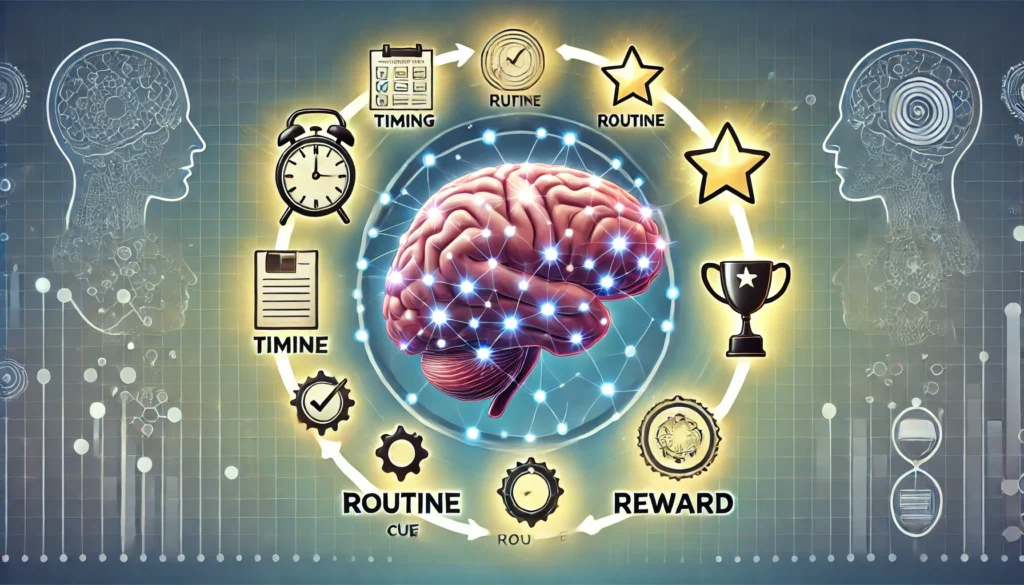
Table of Contents
Introduction
The beginning of the new year is always accompanied by the feeling that something has begun anew and perhaps even the possibility of renewing itself. For some, it’s the chance to make New Year’s resolutions—that is, changes in one or more facets of life. It can be about losing weight, exercising regularly, quitting smoking, or learning any new skill, which are quite often done with great anticipation. But by the middle of the year, many people find that all those resolutions fade into insignificance. Why is it, then, that so many resolutions crumble? What can be done to maintain motivation and maintain a resolution all year around?
In this blog we are going to delve in to the psychology of making New Year resolutions and, most importantly, how one can tap into the motivation and establishment of habits to ensure your resolutions all year long.
The Science of Motivation: Why We Make New Year Resolutions
Understanding motivation is what helps New Year resolutions survive. Motivation is that psychological force that propels an individual to act to fulfill certain goals, which can range from achieving a dream, getting through each day’s tasks, or merely getting out of bed and functioning properly.
Motivation, though, is that feeling which comes in brief periods. The difference, therefore, lies in the way that this motivation is defined, explained, and categorized for purposes of New Year resolutions.
1. Intrinsic vs. Extrinsic Motivation
Motivation can be broadly categorized into two types: intrinsic and extrinsic.
Intrinsic Motivation: This type of motivation comes from within. It is driven by personal satisfaction, passion, and the desire to improve. For instance, you may resolve to run a marathon because you enjoy the challenge or the sense of accomplishment it brings. Intrinsic motivation is often stronger and longer-lasting than extrinsic motivation because it aligns with your values and passions.
Extrinsic Motivation: This is driven by external rewards, such as money, recognition, or approval from others. While extrinsic motivators can kickstart behavior, they tend to be less sustainable over time. For instance, if your goal is to lose weight solely for the sake of fitting into a smaller dress size or impressing others, your motivation may dwindle once the external validation is achieved.
2. The Role of Goals in Motivation
When people set New Year resolutions, they often try to concentrate on specific goals. The goal-setting theory emphasizes that success is more likely when one’s goals are clear, measurable, and achievable. In this respect, it’s essential to approach your goals with a strategic mindset.
SMART Goals: Setting SMART goals, which are Specific, Measurable, Achievable, Relevant, and Time-bound, will help to develop a roadmap for success. Instead of saying “I want to be healthier,” a SMART goal is “I will exercise 30 minutes, 3 times a week for the next three months.
Progress breeds power: Progress breeds motivation. Research demonstrates that one’s motivation for doing the task increases directly with observable signs of progress toward a desired end. That is why marking the miles traveled and observing small successes at each turn of the way can really motivate people to stay in the race throughout the entire year.
The Psychology Behind Habit Formation: How to Make Your New Year Resolutions Stick
While motivation may spark the beginning of a New Year resolution, habit formation is what will decide if it lasts. Habits are very strong because they become automatic behaviors that require less mental energy.

Understanding how habits work will help you make your resolutions part of your daily routine and ensure they last longer than the first weeks of January.
1. The Habit Loop: Trigger, Behavior, Reward
Charles Duhigg, in his book The Power of Habit, states that the “habit loop” consists of three elements: cue, behavior, and reward. It is very important to know this loop to establish habit for life.
Trigger (Cue): This is the event or signal that initiates the behavior. For example, if your goal is to exercise more, the trigger might be setting a specific time each day (e.g., 7 AM) to put on your workout clothes.
Behavior: The behavior is the actual action taken in response to the trigger. This could be your daily 30-minute workout session.
Reward: The reward is the positive reinforcement that follows the behavior. It could be the endorphin rush you get after exercising, a feeling of accomplishment, or even something tangible like a treat or relaxation time.
The key to habit formation is ensuring that your behavior is consistently followed by a positive reward, which reinforces the habit loop and makes it more automatic over time.
2. Small Habits Lead to Big Changes
When people make New Year resolutions, they usually want to make big, sweeping changes. However, trying to make drastic changes all at once can be overwhelming and unsustainable. Instead, focus on small, incremental habits that can build over time.
For example, instead of committing to an hour of exercise every day, start with 10-15 minutes and gradually increase the duration as you build the habit.
Small wins not only enhance motivation but also motivate and push one forward into success. Smaller habits prove to be more manageable and eventually turn out to be long-term winning habits.
3. How Consistency Influences Habits
Consistency is the key to forming habits. According to research, it takes an average of 66 days for a new behavior to become automatic. This means that you will need to stay committed to your New Year resolution for at least two months to see significant results.
To build consistency, keep things simple and easy to develop. Set reminders, set routines, and remove any obstacles that may stand in your way to progress. The more you perform the behavior, the lesser effort it will take from you, and it would become a part of life.
Common Pitfalls to Avoid
While motivation and habit formation are of great importance for success, most people face common pitfalls that make them lose their pace. Knowing these pitfalls will help you avoid them and keep on moving.
1. Unrealistic Expectations
The most common reason why New Year resolutions fail is unrealistic expectations. When goals are too ambitious, people can easily get discouraged if they do not see immediate results. For instance, trying to lose 20 pounds in a month or exercising every day can easily lead to burnout. Instead, focus on setting achievable, realistic goals that are in line with your current abilities and lifestyle.
2. No Flexibility
Life is unpredictable, and sometimes things don’t go as planned. If you miss a workout or indulge in unhealthy food, do not consider it a failure. Instead, view it as a learning opportunity and change your strategy moving forward. Flexibility is crucial for long-term success. In case you slip up, get back on track without guilt or frustration.
3. Lack of Monitoring of Progress
Failure to track progress is another common mistake. Keeping a journal, using an app, or even a calendar will help keep you motivated and monitor how far you have come. Seeing your progress, such as how many days you have worked out or how much weight you have lost, can provide positive reinforcement and keep you focused on your goals.
4. External Pressure and Comparison
External pressures, such as societal expectation or comparisons to others can reduce motivation. New Year resolutions are personal commitments; the best progress occurs by focusing on your journey instead of comparing yourself to everyone else. Cultivate a self-compassion that should prevent you from trying to measure your success on theirs.
Tips for Staying Motivated All Year Long
While the psychology of motivation and habit formation provides a basis, here are some extra strategies to help you remain motivated throughout the year:

1. Visualize Your Success
Visualization is one of the most powerful motivational tools. Imagine yourself having already achieved your New Year’s resolution. Whether it is running a marathon or feeling healthy and energized, vividly picturing your success can provide the motivation to keep going, especially on tough days.
2. Create a Support System
Having a support system will greatly boost your motivation. Share your resolution with friends or family members who can hold you accountable and encourage you when you face challenges. If possible, join a group or community with similar goals, whether it’s a fitness class, book club, or online group.
3. Reward Yourself
Celebrate the small victories along the way as you reinforce positive behavior. When you hit a milestone, reward yourself with something special. Whether it is a small indulgence, a relaxing activity, or a day off, these rewards can be strong motivators to keep moving forward.
4. Keep Focused on Why
Sometimes, we lose sight of why we set our resolutions in the first place. Revisit the underlying reasons for your goals—whether it’s health, happiness, or personal growth—and keep those motivations at the forefront. This will help sustain your commitment when motivation wanes.
The Role of Environment in Habit Formation
Besides personal strategies such as motivation and consistency, it is your environment that also helps or hinders the process of new habits. Habits do not form in isolation; rather, they are influenced by the world around us. By optimizing your environment, you can make it easier to stay on track with your New Year resolutions.
1. Design Your Environment for Success
One of the most powerful ways to foster good habits is by designing an environment that encourages those habits. For example, if your goal is to eat healthier, stock your kitchen with nutritious foods and remove junk food from your cupboards. If you’re committed to exercising more, keep your workout clothes visible and easily accessible, or even place your gym shoes by the door as a reminder.
Studies have proven that our surrounding environment influences our behavior enormously. The more cues available in your environment that prompt positive actions, the more likely you’ll be to stick to your resolution. This is particularly very important during the early period of habit formation, while your new behaviors are delicate and need reinforcement.
2. Accountability Systems and Tools
Another environmental factor that can help support motivation is accountability. Studies have consistently shown that people who have someone to hold them accountable are more likely to succeed in their goals. Find a friend or family member who shares a similar resolution, or join a group that can help keep you accountable.
Technology can also be a powerful accountability tool. Many apps are designed to track your progress and remind you of your goals. For instance, a habit-tracking app will give you visual progress and reminders that will keep you committed. Some apps even allow you to share your progress with friends or family, giving you an additional layer of external accountability.
Accountability works because it taps into social pressure, providing an extra layer of motivation to avoid letting others (and yourself) down.
3. Minimize Temptations
Removing or minimizing temptations in your environment is another way to support your goals. If you’re trying to break a bad habit, such as smoking or excessive drinking, remove the triggers that prompt the behavior.
For instance, if you’re attempting to quit smoking, avoid hanging out with people who smoke or find activities that don’t encourage smoking.
In addition, if you would like to boost your level of daily physical activity, it’s beneficial to organize your environment to promote activity. Think about taking the stairs rather than the elevator, walking or cycling to work, or working from home with a standing desk. These tiny environmental changes subtly reinforce your habits.
The Role of Mindset in New Year Resolutions
One of the most essential factors that will decide for you whether you’ll stay on track or fall off of your New Year’s resolutions is actually your mindset. Your attitude can either push you toward goals or hold you back; therefore, it’s significant to have a growth mindset to overcome the barriers on the way and maintain motivational levels throughout the year.

1. Growth vs. Fixed Mindset
It originates from the study of psychologist Carol Dweck. Those who believe that abilities and intelligence can be developed through effort, learning, and persistence have a growth mindset. On the contrary, a “fixed mindset” holds that their abilities are fixed and cannot be improved.
A growth mindset is, therefore, a must in New Year resolutions. If you think you can learn by effort, then you can do it. You tend to stay motivated and not to give up when things get tough.
Instead of saying “I won’t be able to do this,” growth mindset persons say, “I’ll learn how to do it.” This perspective changes what’s focused from failure toward opportunity for development, hence making it easier to move forward from setbacks.
2. Self-compassion vs. Self-criticism
Another mindset that is crucial for long-term success with New Year resolutions is self-compassion. Self-compassion is the act of treating oneself with kindness and understanding when things do not go as planned rather than being overly critical or harsh on oneself.
If you slip up on your resolution, don’t beat yourself up or consider it a failure. Practice self-compassion by acknowledging the mistake, understanding why it happened, and determining how to improve moving forward.
Being kind to yourself will help you avoid negative emotions that can derail progress, such as guilt or shame. Self-compassion helps you stay on track and continue working toward your goals without the mental burden of self-criticism.
3. Visualization for Motivation
Visualization is a powerful technique used by many successful individuals, from athletes to CEOs. Visualizing your success involves mentally imagining yourself reaching your goal, feeling the emotions of success, and seeing the benefits of achieving your resolution.
When you visualize your success, you activate the same neural pathways that would be involved in the actual accomplishment, which helps reinforce the behaviors needed to reach your goals.
Take a few minutes each day to close your eyes and picture yourself achieving your New Year’s resolution. Imagine how you will feel, how your life will be different, and how proud you will be of your accomplishments. This can keep the motivation going, especially when doubts or frustration are at their worst.
Handling Setbacks and Remaining Resilient
Failure is a part of the process to achieve your New Year resolution. However, how you react to those setbacks will either make or break your success. Developing resilience is essential in helping navigate challenges and staying on track toward your goals.
1. Reframe setbacks as learning opportunities
When you encounter setbacks, it’s important not to view them as failures. Instead, reframe them as learning opportunities. For example, if you miss a workout, ask yourself what happened and why. Did you not plan your day effectively? Were you feeling overwhelmed? By understanding the root causes of your setbacks, you can identify ways to avoid them in the future and adjust your approach.
This reframing process is what helps build resilience. The more you learn from setbacks and continue moving forward, the more confident and motivated you will be in achieving your resolution.
2. Cultivate Patience
Real change takes time, as well as patience to wait for a New Year’s resolution. Do not expect success overnight and do not compare your achievements with those of others. Such a journey is rarely ever linear; there will certainly be ups and downs ahead.
Be patient with yourself and trust the process. If you do meet with obstacles, that too forms a part of this journey. Remember that the long-term benefits far outweigh the short-term troubles. You will soon be able to see what continuous effort can do.
3. The Power of “Failing Forward”
This is referred to as “failing forward,” where one believes that failure is the way forward to success. Do not let failures define you; use them as stepping stones to reaching your goal. Every time you stumble, take lessons from it and apply them going forward. This is how you stay motivated and continually improve.
If you fail or lose a goal, rather than giving up on the resolution, reflect on the experience and ask what you can do better. Each failure can bring you closer to success when learned.
Conclusion: Turning Your New Year Resolution into a Lifestyle
While New Year resolutions are often considered a short-term commitment, they don’t have to be. The psychology of motivation and habit formation is the framework for turning your resolution into a lasting lifestyle change. Understanding the role of motivation, building small habits, optimizing your environment, and maintaining a growth mindset can increase your chances of success.
The key is to stay consistent, be patient, and view setbacks as opportunities for growth. With these strategies, you can not only achieve your New Year resolution but also make it a part of your everyday life.
Remember, change is not immediate; it requires time and effort. The reward makes it all worthwhile, however. As you look back at your goal setting for the upcoming year, remember that this is far more than the first couple of weeks of January. The right mindset and appropriate strategies can make you keep going throughout the year.


